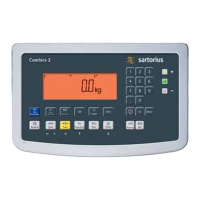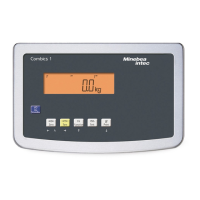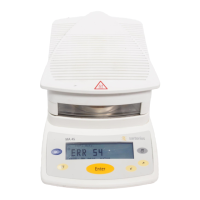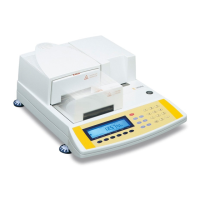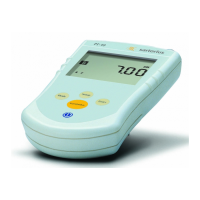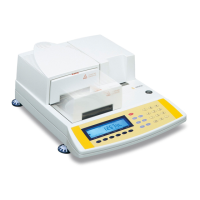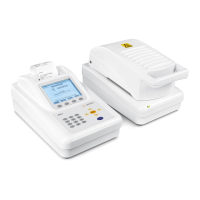Operating Instructions Combics Indicators 103
Data Interfaces
Analog UniCOM interface (optional) Level: 4 to 20 mA, 0 to 20 mA, 0 to 24 mA, 0 to 10V
Power supply: Internal
Factory setting: 4 to 20 mA
Connection: CAISL1, CAISL2 devices (IP44 protection):
25-pin D-Sub socket
CAIS1, CAIS2 devices (IP69K protection):
Connection via screw terminals in the housing, cable routed into the
housing via a cable gland.
1)
Optional UniCOM universal data interface
2)
XBPI operating mode: 9600 baud, 8 data bits, parity: odd, 1 stop bit
3)
Only with the standard COM1 interface
4)
Network address is valid only in XBPI-RS485 operating mode
Connections Options The following printers can be connected to COM1 and UniCOM
– YDP20 (user-defi ned interface parameters)
– YDP14IS (strip or label printer)
– YDP04IS (strip or label printer)
– Universal printer (user-defi ned transmission parameters)
The following devices can also be connected to COM1:
– Foot / Hand switch
– PC (RS-232 interface)
– 2nd weighing platform (Combics 2 only, RS-232 interface)
– External checkweighing display (stop light) via a digital I/O (Sartorius
standard)
The following devices can also be connected to the optional UniCOM:
– PC (RS-232 interface)
– 2nd weighing platform (Combics 2 only, in RS-232 or RS-485 mode)
– 2nd printer (external power source required)
– Remote display
– Current interface (4-20 mA, 0-20 mA, 0-24 mA, 0-10 V)
– Profi bus
– Ethernet
– Galvanically isolated digital I/0
3
You may need to use an external power supply to operate peripheral devic-
es.
Connecting a second weighing platform:
A second weighing platform can be connected to the Combics 2 at COM1,
UniCOM or COM-WP.
COM1 is operated in the RS-232 mode. A second weighing platform can
use the following operating modes:
– SBI standard
– SBI verifi able
– XBPI-232 (factory setting)
– ADC-232
UniCOM can operated in either RS-232 or RS-485 mode. A second weighing
platform can use the following operating modes:
– SBI (RS-232 mode)
– XBPI-232 (RS-232 mode)
– ADC-232 (RS-232 mode)
– IS-485 (RS-485 mode, XBPI mode, factory setting)
– ADC-485 (RS-485 mode)

